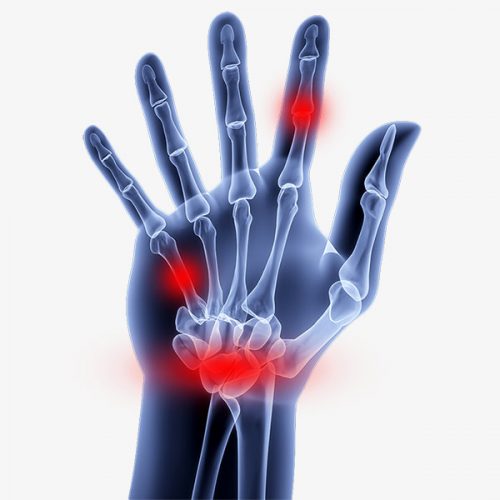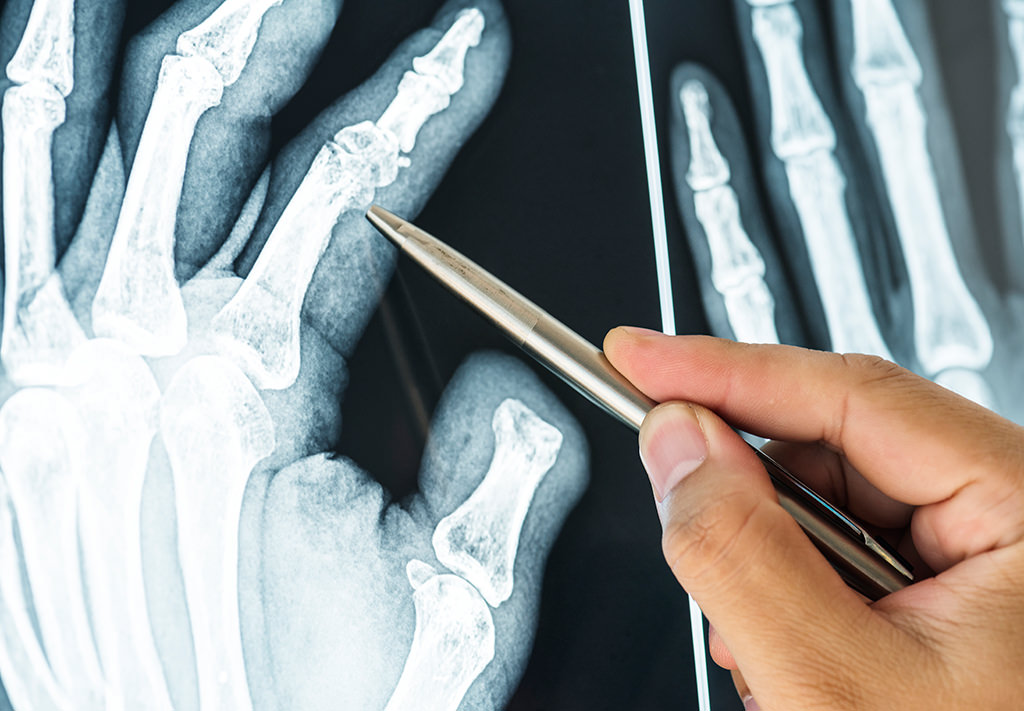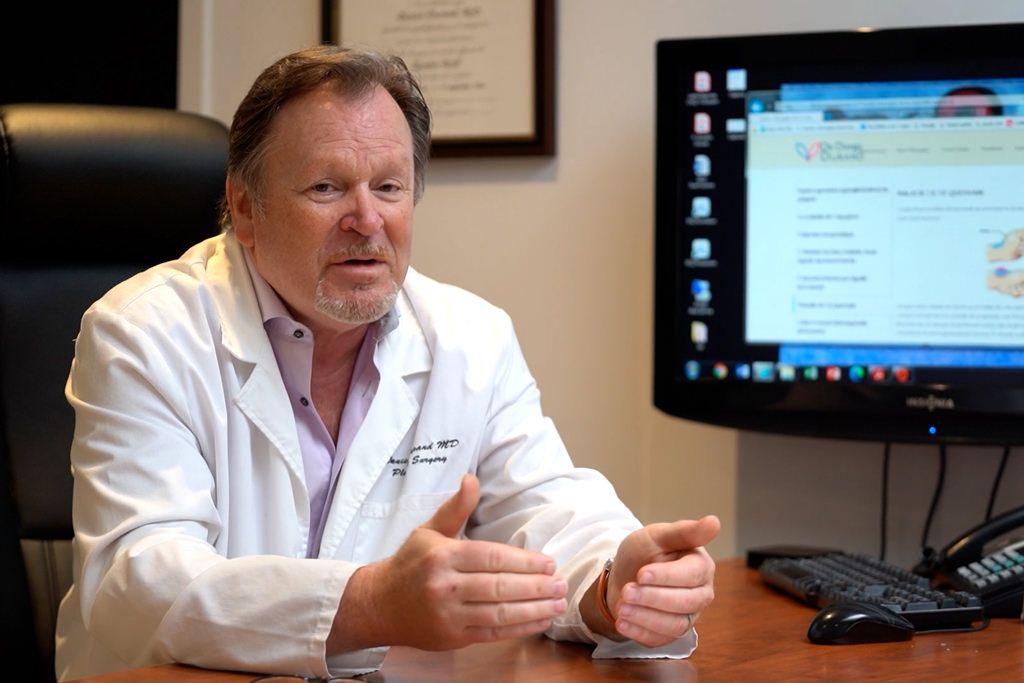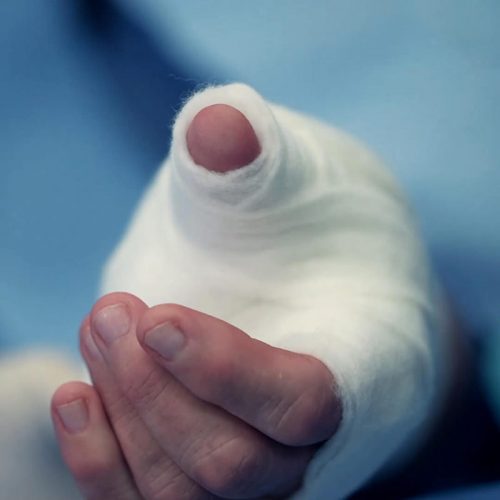

Hand, Wrist & Fingers Fracture




WHAT IS HAND FRACTURE?
A hand fracture is a break in one of the bones in the hand. This includes the small bones of the fingers (phalanges) and the long bones within the palm (metacarpals). A broken hand can be caused by a fall, crush injury, twisting injury, or through direct contact in sports.
In most cases, a hand fracture will heal well with nonsurgical treatment. Depending on the type and location of the fracture, this may include wearing a cast, splint or buddy straps for a period of time. For more serious fractures or for fractures that do not line up properly, however, surgery may be required to realign the broken pieces of bone.
It’s important to treat a broken hand as soon as possible. Otherwise, the bones might not heal in proper alignment, which might affect your ability to do everyday activities, such as writing or buttoning a shirt. Early treatment will also help minimize pain and stiffness.
SYMPTOMS OF THE FRACTURE
A broken hand might cause these signs and symptoms:
- Severe pain that might worsen when gripping or squeezing or moving your hand
- Swelling
- Tenderness
- Bruising
- Obvious deformity, such as a crooked finger
- Stiffness or inability to move your fingers or thumb
- Numbness in your hand or fingers

If you think you might have a broken hand, see a doctor immediately, especially if you have numbness, swelling or trouble moving your fingers. A delay in diagnosis and treatment can lead to poor healing, decreased range of motion and decreased grip strength.
IF YOU ARE SUFFERING FROM SYMPTOMS OF Hand, Wrist & Fingers Fracture AND EVALUATING YOUR TREATMENT OPTIONS, SCHEDULE A CONSULTATION WITH DR. DANIEL DURAND TODAY.
WHAT CAUSES HAND FRACTURE?
Hand fractures can be caused by a direct blow or crushing injury. Motor vehicle crashes can cause hand bones to break, sometimes into many pieces, and often require surgical repair.
Your risk of a broken hand may be increased if you participate in sports like football, soccer, rugby, or hockey. Osteoporosis, a condition that weakens bones, may also increase your risk of a broken hand.
HOW IS FRACTURE DIAGNOSED?
Physical Examination. Dr. Durand will ask about your symptoms and perform a careful examination of your fingers and hand. During the exam, he will look for:
- Swelling or bruising
- Deformity
- Overlapping of your fingers
- Cuts or lacerations to the skin around the injury
- Limited range of motion
- Joint stability
- Numbness in your fingers, a sign of possible nerve damage
Typically, Dr. Durand will evaluate the tendons in your hand to ensure they are functioning properly and will check for instability in the joint(s) near the fracture.
X-rays. X-rays provide images of dense structures, such as bone. Dr. Durand may order one or more x-rays to help identify the location and extent of the fracture.
WHEN SEEKING A DIAGNOSIS OR TREATMENT, IT’S BETTER TO SEE A DOCTOR SOONER RATHER THAN LATER. ONCE A CONDITION IS SEVERE, THE DISEASES ARE MORE DIFFICULT TO CORRECT.
EARLY INTERVENTION IS KEY TO AVOIDING PERMANENT DAMAGE. DEPENDING ON YOUR DIAGNOSIS, NONSURGICAL TREATMENT MAY BE AN OPTION.
HOW IS HAND FRACTURE TREATED?
Treatment involves assessing the injury to the surrounding tissues, and replacing the bones to their anatomic positions. This may be accomplished with manipulation and casting; and sometimes surgery is necessary in order to restore the bones to their normal position.
NONSURGICAL TREATMENT
If a fracture does not line up in an acceptable position, often, your doctor can realign the bone fragments by gently manipulating them back into position without making an incision. A cast, splint or brace may be applied to keep the bones in acceptable alignment while they heal. The cast may extend from your fingertips almost to your elbow to support the bones properly.
Your doctor will probably order a second set of x-rays about 1 to 2 weeks later. This is done to ensure that the bones are healing in the proper position.
Depending on the location and stability of the fracture, you may have to wear the cast for 3 to 6 weeks. Some types of fractures can be protected by wearing a removable splint or by being “buddy strapped” to an adjacent non-injured finger. The non-injured finger acts as a “moving splint” to support the injured finger. Gentle hand exercises can usually begin after 3 weeks.
SURGICAL TREATMENT
Some hand fractures require surgery to realign and stabilize the fracture fragments. This includes open fractures in which pieces of bone have broken through the skin.
Your doctor will make an incision to help reposition the bone fragments into their normal alignment. Small metal devices—such as wires, screws, pins, staples, and plates—may be used to hold the pieces of fractured bone in place.
OUR PROCEDURES
HAND CARE WITH DR DANIEL DURAND
NOT ALL HAND AND WRIST CONDITIONS REQUIRE SURGICAL SOLUTIONS. OTHER TREATMENT OPTIONS ARE AVAILABLE FOR LESS SEVERE ISSUES. IF YOU’VE BEEN EXPERIENCING Hand, Wrist & Fingers Fracture SYMPTOMS, SCHEDULE AN APPOINTMENT WITH DR. DANIEL DURAND TODAY!




